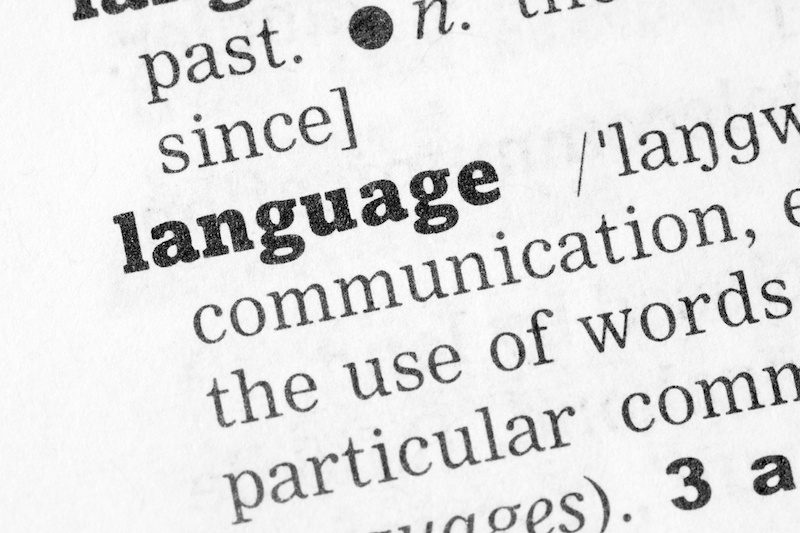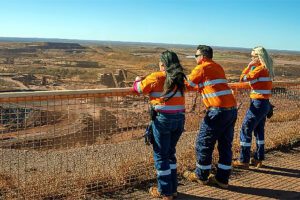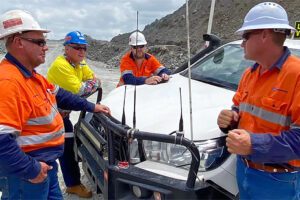Safety observations or safety interventions…we’re very hung up on language. Dave Whitefield shares his thoughts and challenges the notion of behavioural based safety…..
WHAT’S IN A NAME?
If you have read previous articles I have written you may have picked up that I think language is very important. To me, language is like the currency of culture. It is how the unspoken and underlying assumptions that drive the culture are given life and are passed on.
 So what therefore can be interesting is when something is labelled in a certain way – let’s say safety observations – but in reality is not what it appears to be. In these cases, the language doesn’t match the reality, and this has an impact. At an obvious level, it is like when someone says one thing, but does another. We can see it and feel it, and it has an impact on people and the culture.
So what therefore can be interesting is when something is labelled in a certain way – let’s say safety observations – but in reality is not what it appears to be. In these cases, the language doesn’t match the reality, and this has an impact. At an obvious level, it is like when someone says one thing, but does another. We can see it and feel it, and it has an impact on people and the culture.
SAFETY OBSERVATIONS ARE NOT OBSERVATIONS
What I have noticed is that the formal process of a safety observation, commonly associated with Behaviour Based Safety (BBS) programs, is mislabeled. What’s more, I think everyone kind of knows it but isn’t aware of it.
To explain in a bit more detail, I think the process referred to as a “safety conversation” is actually a “safety intervention”. However I think people can also sense that there is a disconnect between the label and the process, but it’s not something that is spoken about.
STOP…THIS IS AN INTERVENTION
On the first point, the reason they are really interventions and not conversations is because there is so much focus on the behaviour, not on the interaction or conversation between the people involved. It’s all about the right or wrong (let’s be honest, it’s nearly always wrong) behaviours and the agreement on the correct behaviour for the future. There is no focus on just seeking understanding, it’s all about correcting people and keeping score.
Now I want to point out that I think a lot of the time people have the right intention, but the systemising and measuring that observations are packaged within, primes people to focus on the outcome. For example, we don’t measure the quality of the conversation, we measure the number of observations (interventions) done.
IMPACT ON CULTURE
To the second point, I feel that people sense the disconnect between the passive-sounding label (a conversation) and what is actually a very active process (an intervention). It’s naturally uncomfortable for many people to confront someone about their behaviour, but it doesn’t sound like it should be uncomfortable, and this becomes an unspoken issue that influences culture (in my opinion for the worse). Isn’t it weird that people resist something that should have a positive outcome?
WHAT IF WE CALLED THEM INTERVENTIONS?
As a thought exercise, imagine if we actually called safety observations, safety interventions. Imagine how it would be framed? Imagine having a KPI of having to perform 10 safety interventions a month? Imagine how you would feel when someone comes up and says: “Hi, I’m just here to do a safety intervention”?
“…we don’t measure the quality of the conversation, we measure the number of safety observation (interventions) done.”
Would that change the way people feel about them? Would it at least help us understand why people may feel uneasy about doing them? Calling them interventions wouldn’t make it any easier to do, but at least people wouldn’t feel the disconnect in a hidden way, they would be aware of why they don’t like them. People don’t like to intervene in other people’s behaviours.
WHAT TO DO? MY RECOMMENDATIONS ARE SIMPLE:
- First, stop it! Don’t do safety observations (interventions). Oh, and resist the urge to have to replace it with something else. We seem OK at identifying and complaining about things that don’t work, but we seem reluctant to get rid of it because we seem to have a pathological fear of stopping safety-related activities. If it isn’t working and I think it actually harms culture, then stop it.
- Second, call it what it is – If you are going to have an intervention process where workers observe others to correct unsafe behaviour (or reinforce safe behaviour), then call it a “Safety Intervention”.
- Finally, resist systemising and measuring – If you don’t have a process that dictates how you do something (in this case an intervention), what outcome you must achieve, or how many you have done, this removes the focus being on the process and outcome. You let people have conversations with no explicitly expected outcome, except to have a conversation. People can be curious.
FINAL WORD
Imagine a workplace where “safety conversations” were just conversations? Where they were not systemised or measured, and where the ultimate goal of a conversation was simply to seek to understand, not to change. I know this makes people nervous because we feel that if we can’t measure something we won’t know its value. However, we need to balance that against the merits of being able to measure something that actually has no value.
Read more Mining Safety News














Add Comment